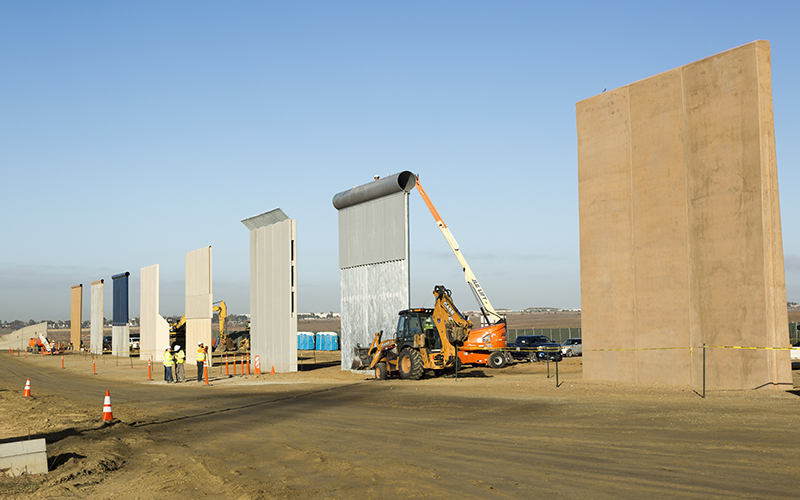WASHINGTON – Santa Cruz County Sheriff Tony Estrada said a border wall would do “very little” to stop the flow of drugs, most of which come in to the U.S. through ports of entry.
Estrada’s comments came after a conference call hosted by the National Immigration Forum in which political and law enforcement authorities from border communities refuted President Donald Trump’s claim that a border wall alone would stem the flow of drugs.
“I have seen drugs coming through all my life and I can tell you a wall will absolutely not help them go away,” Estrada said. “Most drugs come through the ports of entry so a border wall would not be helpful at all.”
The call comes just days after Trump and congressional leaders ended a five-week government shutdown sparked by their impasse over the president’s demand for $5.7 billion toward construction of a border barrier.
House and Senate conferees have three weeks to present a new budget to Trump, who has threatened to shut down the government again or declare a national emergency and divert funds from other agencies if he does not get the wall funding he wants.
In an editorial Tuesday, Rep. Andy Biggs, R-Gilbert, said Trump should do just that. He wrote in the Washington Examiner that the president has the authority under Title 10 of the U.S. Code concerning military construction to erect a wall without congressional approval.
“I urge him to declare that our unfenced areas of the southern border are active drug trafficking corridors, which will allow him to use available funds to build walls, fences, roads, lights, detention facilities, and other necessary infrastructure,” Biggs wrote.
Estrada called the idea “absolutely ridiculous.”
Estrada, who has lived and worked in Nogales for more than 25 years, sees a different reality. His community faces just a portion of the many miles of slotted fence that divides Nogales, Arizona, from Nogales, Sonora.
He was born and raised on the Mexican side of the wall before emigrating as a toddler to the U.S. side, where he served on the Nogales Police Department until 1991 before being elected as Santa Cruz sheriff in 1993.
Estrada said the border needs to be secure, but that more personnel and better technology are the best way to achieve that.
Others on the conference call Tuesday echoed Estrada.
McAllen, Texas, Mayor Jim Darling said decreasing drug trafficking starts with increasing enforcement around ports.
“There’s no question, there’s a lot of drugs coming across the United States. But most of it is through ports of entry,” he said.
“I think part of what the president offered as a compromise would work,” Darling said, referring to Trump’s Rose Garden speech Friday. “More (law enforcement) jobs are very effective, more people, more technology on bridges … in addition to more cooperation with Mexico in relation to cartel activity.”
That speech also called for comprehensive border security that would include “cutting-edge technology” and a partial border wall.
Biggs did not respond to requests for comment Tuesday, but in his editorial he said technology is not the solution.
“Democrats claim that we can secure our border with technological tools such as cameras, sensors, and drones while they criticize an actual, physical wall as being unnecessary and immoral. Democrats are wrong,” said Biggs. “A wall will help our Border Patrol agents catch drug and human traffickers.”
But those who live at the border say technology is the most essential part of halting drug trafficking through ports of entry.
When U.S. Customs and Border Protection awarded a $3 million grant to build better wall gates and infrastructure at the border in Cameron County, Texas, the grant included technology to improve surveillance.
“All of the information confirms 90 percent of drugs that come in to our country come in through ports of entry, so that ought to be the focus,” said Cameron County Judge Eddie Treviño. “The building of a concrete wall will not alter that at all. We need to invest in our infrastructure and our ports of entry.”
